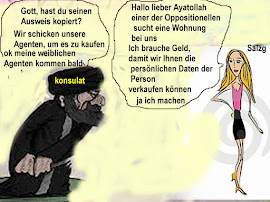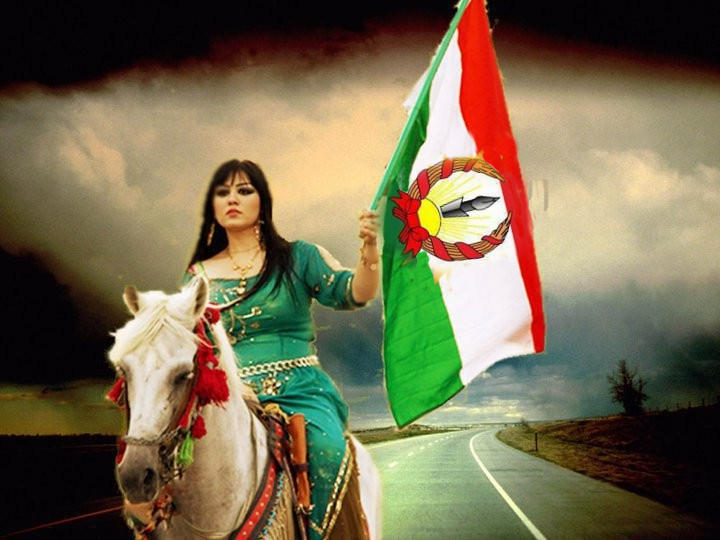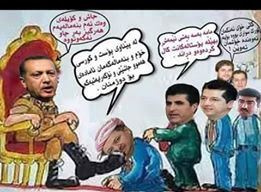I think that all Iranian leaders are terrorists because they have killed very many Iranian opposition leaders except country during scramble janis power, khamanie all Iranian religious dictatorship of the leaders is the world's biggest terrorists
http://nationalinterest.org
Terror and iranian big terrorist Back to the Future in Iran's Election.
Sahar Namazikhah, Reza Marashi
As the field of candidates for Iran’s presidential election takes shape, the most intriguing entry into the race is Ali Akbar Hashemi Rafsanjani.
His candidacy is a threat to all other candidates—and more critically, it presents a major challenge to Iran’s most powerful man, Supreme Leader Ayatollah Ali Khamenei. Despite the generational changes that have shaped the Iranian system in recent years, Rafsanjani’s challenge to Khamenei may take this election back to the future.
After Iran’s 1979 revolution, Ayatollah Khomeini faced the herculean task of shaping widespread upheaval into what eventually became the Islamic Republic. Through this deeply violent and non-democratic decision-making process, five men are commonly thought to have been pillars at Khomeini’s side: Mohammad Beheshti, Mohammad Javad Bahonar, Morteza Motahhari, Hashemi Rafsanjani, and Ali Khamenei. Three were killed in terror attacks shortly after the revolution. Two pillars remain—and they are openly challenging one another for the future of the Islamic Republic.
The power struggle is serious and dates back years. Since the contested 2009 presidential election, Rafsanjani has repeatedly—though often indirectly—criticized Khamenei’s policies and governance. In an April 2013 meeting with former governors, Rafsanjani openly stated that distrust exists between him and the Supreme Leader—an unprecedented move in Iranian political culture. He also criticized Khamenei’s governance for allowing the Revolutionary Guard undue influence in Iran’s economic and foreign policy, and enabling the development of a militarized state.
Mostly, however, Rafsanjani has castigated the state for oppressing Green Movement demonstrators. He indirectly emphasized to Khamenei that unleashing the security forces against a diverse socioeconomic swath of Iranian society was wrong. As a result, some in the Iranian opposition and among Iran’s youth have grown to appreciate Rafsanjani’s support for their movement. Others, of course, remain deeply opposed to him.
Khamenei has another cause for concern: the relative successes of Rafsanjani’s policies during his two terms as president (1989-1997). These accomplishments by his team of technocrats—post-war reconstruction, improved relations with the world and a greater degree of overall economic stability—are seen by some as a high point in the contentious life of the Islamic Republic. Rafsanjani also established the Islamic Azad University in 1982, which now is the world’s third-largest university by enrollment numbers, with four hundred branches across Iran and the world and an accumulation of assets estimated to be worth $20–25 billion.
What makes Rafsanjani such a polarizing figure, however, is the other side of his political legacy, which some in Iran associate with corruption and the murders of political opponents abroad.
Khamenei’s team knows this, but they also realize that a general belief has taken shape among a portion of Iranian society: despite his past, Rafsanjani is also a nationalist who wants Iran to become a powerful country. The deterioration of political, economic and social life has led to some hoping that his candidacy can decrease the debilitating effects of mismanagement and sanctions. This is quite the departure from Rafsanjani’s 2005 campaign, when he was portrayed—not entirely incorrectly—as a personification of the nepotism and corruption that plagues the Islamic Republic.
Precisely because Rafsanjani is such a polarizing figure in Iranian politics, he has a unique ability to mobilize voters, including both supporters and detractors. And preelection mobilization in Iran has proven that it can help facilitate unpredictable outcomes. So, what can Khamenei do to hedge against Rafsanjani? None of his options appear cost-free.
Disqualifying Rafsanjani is not impossible, but it appears unlikely. He still has support from important power networks inside the system, particularly the business and clerical networks. Both have already voiced their support for his candidacy. In an effort to avoid splitting the vote among multiple candidates, key reformists have also united behind him.
Building a strong conservative coalition of loyalists—including, but not limited to, Ali Akbar Velayati, Gholam Ali Haddad Adel, Mohammad Baqer Qalibaf and Saeed Jalili—to back a single candidate is likely Khamenei’s first step at pushing back. However, this is easier said than done. Each man currently sees himself as best suited for the position, and will seek assurances on key positions in return for withdrawing from the race. Back room deals are common in the Islamic Republic, but it remains unclear whether a divided set of conservative factions can coalesce.
Beyond coalition building, Khamenei has tacitly allowed public attacks against Rafsanjani in an effort to reduce his level of support and votes. This process can include public statements, spreading rumors through the media, releasing files of previously undisclosed information, and possibly even physical attacks. The latter scenario sounds extreme, but it would not be the first time that someone tried to take Rafsanjani’s life.



















.jpg)







































Inga kommentarer:
Skicka en kommentar